This article is intended to outline some basic information about engine oil for your engine, and help answer some of the common questions we get asked oh so often.
Oil Viscocity
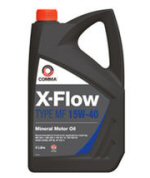
Firstly let us cover the basic question. What is the right viscocity for my rotary engine. This can in some cases depend on you motor and its age. What most rotary specialists can agree on is that the 5w30 oil is not good when it comes to the long term health of your engi internals, especially the stationary gear bearings, and rotor bearings inside your engine. These bearings are what really suffer from poor oil selection.
Essex rotary recommends the use of 10w40 or 15w40 oils in modern rotary engines, there are exceptions to this notably the use of Synionic(R) Rotary Formula oil, this comes in a 10w30 viscocity however being specially formulated for the rotary engine along with its ionic bondng properties makes it a great choice if your happy to pay the same kind of money for oil as you where from the Mazda dealer for Dexelia Ultra.
Idamitsu rotary oil, though not available in the UK also comes in a thicker viscosity however this stuff is excellent and developed with Mazda Japan for race use in cars like the legendary 787b Le Mans Winner.
The reason we recommend oils like 10w40 and 15w40 is for the superior protection they offer compare to that of the thinner 5w30 that is recommended by mazda in Europe. If you imagine a traditional bearing that uses balls to reduce the friction between surfaces, now replace the balls with oil being pumped inner wen these metal surfaces under high pressure (between 2bar to 7.5bar of oil system pressure) it’s this high pressure oil that does the job of the balls and prevents the two metal surfaces, in the case of the rotary engine the surfaces between the eccentric shaft and its asuciated bearing. These surfaces are never designed to come in contact with the bearing being coated in soft “white metal” over a copper under layer.
It’s the thicker oil that helps prevent this surface to surface contact much better then 5w30 oils.
In some older rotaries owners have chosen to use even higher viscocity oils such as 20w50 again this is mainly due to bearing protection but it’s worth noting that as engine age its a good idea to increase the viscocity to compensate.
So to conclude this section, oils we would recommend
Why Not Use 5w30 ?
- 10w30 Idemitsu Racing Rotary Oil or Synionic(R) rotary formula ONLY
- 10w40
- 15w40
- 20w50 for many older engines such as RX-7′s
As stated above 5w30 oil is possibly the biggest killer of bearing inside the rotary engine specifically in the RENESIS generation of the 13b couple thin oil with a lower oil pressure then that of the RX-7 FD3s and you got a recipe for premature engine failure not because of apex seal wear but in many cases due to excessive wear on the bearings.
what about the Series 2 RENESIS in the R3? Well while Mazda increased the oil system pressure in the Series 2 RENESIS found in the R3 here in the UK we would still discourage owners of the R3 from sticking with 5w30 oil.
DO NOT USE 5w30 OIL IN ANY MAZDA ROTARY ENGINE.
Oil Grade
There are many choices to be made when your selecting oil for your rotary engine, as if viscocity was not enough to contend with you then newt to make a choice between either
- Mineral
- Semi-Synthetic/Part-Synthetic
- Fully-Synthetic
Mineral oil : In truth the only oil to whose to be totally safe is mineral oil this is normally refined from crude oil taken from the ground and will happily burn inside your engine leaving minimal carbon deposits. This kind of oil if our “go to oil” here at Essex Rotary we use more of this oil in a 15w40 viscocity then any other we offer.
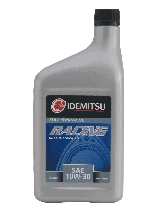
Semi-Synthetic Oil : Also labelled by some companies as part-synthetic, semi-syn, part-syn etc can be a bit of a minefield. If you wish to use semi-synthetic oil then please make sure you get a semi that is made from mineral oils, this is not always labelled as such so look out for the grade “A3/B4″ on the label.
Fully-Synthetic : This in nearly all cases is a massive no no when it comes to putting it in your engine. Normally man made with a high resilience to heat and being burns.this normally makes them a bad choice for rotary engines. There are exceptions to this like the use of Idamitsu rotary oil (mentioned above) this is a fully synthetic oil that is designed to burn safely and cleanly in the rotary combustion engine. Royal Purple also state that their engine oils are safe for
Why Not Fully Synthetic ?
The issue with most conventional fully synthetic oils is that they are designed to be resilient to the high temps found inside the engine, so when burnt in the combustion process they are prone to breaking down and leaving deposits that can contribute to “carbon build up” this buildup can reduce the free movement of seals inside the engine and in extreme cases stop them moving all together.
What Can I Do if my engine has been run on Fully Synthetic Oil ?
If you know or suspect your engin has been filled and run fully synthetic oil other then that we mentioned above (being Idemitsu Racing Rotary Oil) then you have several steps you can take to minimise the potential harm that may have been caused by its use.
Before we go in to that, wefeel it’s important to note that during a normal oil change on any rotary engine that include a remote oil cooler setup of any kind, this includes most modern rotary cars in the Mazda lineup (RX-7 FC3s and FD3s plus the RX-8) that you can only ever drain a proportion of your engines total oil capacity by simply removing the sump plug.
As an example the RX-8 in UK market spec came with a dual oil cooler setup. This setup means that total oil capacity is around 8.5 Liters, around 3.5-4 liters of this is stored in the sump when your engine is not running. The remaining oil is trapped in th coil coolers, oil lines and parts of he engine that do not drain back in to the sump fully when the engine is not running such as the oil galleries inside the rotors.
With this in mind tour first step would be to remove as much of the Synthetic oil from the system as possible and replace it with oil of the accepted recommended grade. This is usually dune via what we refer to as a double oil change. It’s a simple process that just requires the following steps.
Please be very careful as hot engine oil is well hot and can burn.
- Warm up your engine then turn it off.
- Jack up your car.
- Remove the oil drain plug and drain the engine of oil.
- Once drained, reinstall the oil drain plug and refill your engine with one of our recommended oils to the correct level.
- Restart your cars engine and as before warm it up to operating temperature, once warm turn the engine off once again. (This second warm up allows the oil to flow around your engine)
- Remove the oil drain plug and drain the engine oil once again.
- While the oil in draining remove your old oil filter (be careful as this will be hot)
- Once the oil is drained, reinstall the oil drain plug, and install a new oil filter.
- Now simply refill your engine once again with one of our recommended oils.
- Lastly start your engine, warm it up and shut it off, give it around 5 minutes for the oil to drain then check the oil level on the dip stick and top you oil off if required.
Tip: We prefer not to fill the oil to the maximum mark on the dipstick instead opting to fill it around 75%-85% this eliminates the chances of accidental oil overfill that can contaminate your intake and air filter.
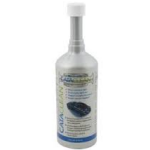
So once you have swapped out your engine oil for the good stuff, the next step we would recommend would be an engine treatment to help reduce carbon buildup in your engine. This gives you several options.
- Cataclean
- Seafoam (fuel treatment style)
- Seafoam (direct engine treatment)
With both Cataclean or Seafoam (fuel treatment style) it’s simply added to your fuel tank as per each products specific instructions. This is a simple way to help reduce carbon deposits inside your engines combustion chambers. If you wish to try a an approach a little more aggressive then we have had good success using Seafoam in an undiluted form injected directly in to the engine as a liquid. It’s then left to soak in to the carbon before restarting the engine to burn these deposits off.
This this process there is a risk of engine damage as you would be introducing a liquid in to your engines combustion chambers. For this reason we will not go any further in to this process here due to the ricks of engine damage if it’s one wrong. If you want more information on this service please get in contact.
The most fun stop ould come now. Simply take it for a few good hard drives this should help burn off some of the deposits left from the use of Synthetic oil.
Lastly we have found that the addition to high quality 2T premix oil (also commonly known as 2 Stroke oils) suck as Idemitsu Racing Rotary Premix or Royal Purples HP-2C Premix to be highly successful at keeping general carbon buildup to a minimum. Unfortunately some carbon deposits are inevitable in any engine but keeping things under control is the important thing.
How Often Should I Change My Engine Oil ?
I an ideal world as often as possible, we know of owners that change their oil every 1000 miles, using the relitivly low cost of mineral oil (the most common option for most owners) as justification for it being “a no brainer”
Realistically you should be changing your engine oil at around 3000 mile intervals, although most owners feel this is overkill and a needless expense, considering Mezda felt that on the RX-8 for example oil changes at 12’500miles or yearly would be sufficient for suck a high revving engine.
Put simply they are wrong, so as a trade off for those that feel they cannot justify such frequent oil changes, We would strongly advise that wou stick to an absolute maximum of 6000 miles or 6 months between oil changes, whatever comes first.
This is due to the importance of clean oil inside your engine at all times.
So to summarise here oil change frequency ;
- Optimal interval 1000 – 2000 miles
- Recommended 3000 miles
- Absolute maximum 6000 miles
- NEVER leave it for Mazda’s recommended 12’500 miles
The Importance Of Clean Engine Oil.
So why it is so important to have clean oil you ask ? Well as with any engine the less debris, metal filings, and miscelanious crap you have suspended in your oil the better, this is just common sense. Your engine oil is there to prevent wear on surfaces in your engine that without the presence of a lubrication fluid would simple be a metal on metal contac, creating enormous amounts of wear and rediculous amounts of heat due to the friction.
Engine wear to some degree or another in any engine, even with the use of super high quality lubricants is unavoidable. It’s the particles of metal (from worn bearings, side irons, the mat all oil control rings etc) that become suspended in your engines oil that are the issue. While your engines oil filter does a great job it can only filter particles down to a certain size from the oil. Before oil gets to the filter it has to go through your oil pump, oil lines and oil cooler(s) where these harmful larger particles can cause wear (to say the oil pump) or in some partially block passages in the oil cooler(s) leading to higher oil temps and reduced engine cooling.
It’s a build up of the stuff that makes it past your your oil filter, that can cause issues as well particularly with the system designed to lubricate your rotary engines combustion chambers. Unlike a piston engine the rotary engines combustion areas are in no way exposed to oil from the “crank case” or sump. This means that to lubricate the many seals found in the engines rotors that make up the three combustion chambers of each rotor oil has to be injected in to the chamber.
This requirement is met by the use of a system specific to the Rotary engine. It consists in its most basic of terms of 3 major components.
- The Oil Metering Pump (OMP for short)
- Oil Feed Lines
- Oil Injectors
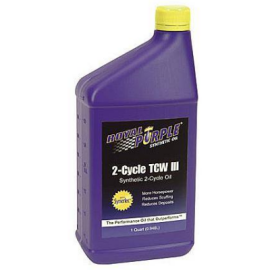 The OMP is supplied oil from the engines main oil pump under pressur, it is the job of the OMP to regulate oil flow to the engines oil injectors. The oil injectors are supplied via the oil feed lines. It’s the small internal bore of the oil feed lines and the tips of the oil injectors that can be at risk of becoming blocked with debris suspended in the oil being pumped through them. And if blocked it’s quite obvious that the knock on effect will be reduced lubrication to the seals in the engine leading to a reduction in engine compression.
The OMP is supplied oil from the engines main oil pump under pressur, it is the job of the OMP to regulate oil flow to the engines oil injectors. The oil injectors are supplied via the oil feed lines. It’s the small internal bore of the oil feed lines and the tips of the oil injectors that can be at risk of becoming blocked with debris suspended in the oil being pumped through them. And if blocked it’s quite obvious that the knock on effect will be reduced lubrication to the seals in the engine leading to a reduction in engine compression.
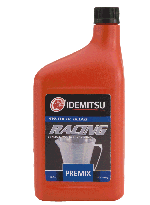
This is another of the reasons we strongly advise using premix in every tank of fuel, as an extra level of lubrication delivered to your
engines combustion chamber independently of the the oil injection system.
For more information on premix and its advantages please take a look at our technical article on the subject of Premixing.

